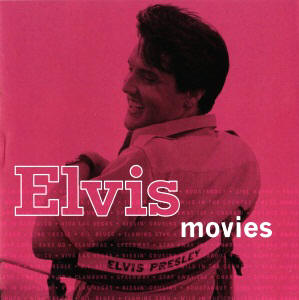|
To simply state that Elvis Presley was part of
the movie business is to downplay his commercial clout. Even "movie
star" doesn't quite do it. He was more like an industry unto himself,
with each new picture often generating a bestselling soundtrack
album and a couple of radio-friendly singles that would climb to the
upper reaches of the pop charts. In the course of 13 years, he made
31 films, releasing at least two a year from 1961 to 1969. Eleven of
his movie soundtracks made it into the Top Ten. Blue Hawaii, his
biggest soundtrack hit, lodged a remarkable 179 weeks on the
Billboard album chart, with 20 of them at #1. Similarly, G.I. Blues
spent 111 weeks on the Billboard album chart, ten at # 1.
Although Elvis garnered some serious notice as an actor for such
early roles as halfbreed Pacer Burton in the western Flaming Star or
as trouble-magnet Danny Fisher in the New Orleans-set King Creole,
audiences - and the studio bosses - preferred to see him in frothier
flicks like Blue Hawaii, Girls! Girls! Girls! and Viva Las Vegas,
which set an earlysixties benchmark for on-screen sexual chemistry
thanks to the inspired pairing of Elvis and Ann-Margret, fresh from
her Bye Bye Birdie triumph. Not thit Elvis had any trouble
attracting lovely young co-stars: he played opposite Ursula Andress,
Tuesday Weld, Nancy Sinatra, Juliet Prowse, Barbara Eden, Shelly
Fabares and Mary Tyler Moore (playing an undercover nun, of all
things), just to name a few of the pop icons he crooned to and
courted on film — and sometimes, as rumor has it, off-screen too.
More than three decades after his final flick was released - Change
Of Habit, which aimed to be more socially aware than, say, Speedway
- the Elvis Presley filmography seems more kitsch than classic, a
sublime guilty pleasure, though there are moments, like the
brilliantly executed title-song number from Jailhouse Rock, that
remain more exhilarating than a thousand MTV videos. The music,
however, has lost none of its charm, exuberance or swing.
Artists like Bruce Springsteen have found tremendous inspiration in
these tunes: in fact, Bruce has taken "Follow That Dream," slowed it
down, rearranged some lyrics and turned it into a stirring live-show
anthem. Elvis's music did that to people, and still does. lt got
them into movie theatres and record stores, to turn up the radio or
pull their chairs closer to their television sets.
This album is like one of those maps to the stars' homes that you
can still find on some corners in Los Angeles: it's a guide to an
era when Elvis was following his dream in Hollywood. (from the liner notes) |
